AC Buying Guide – How to choose the best air conditioner
Air conditioner has become more of a necessity these days.
With a number of options available, it's not easy to know which is one is for you.
We made buying an AC a lot easier for you with this detailed guide on how to choose the best AC for yourself.
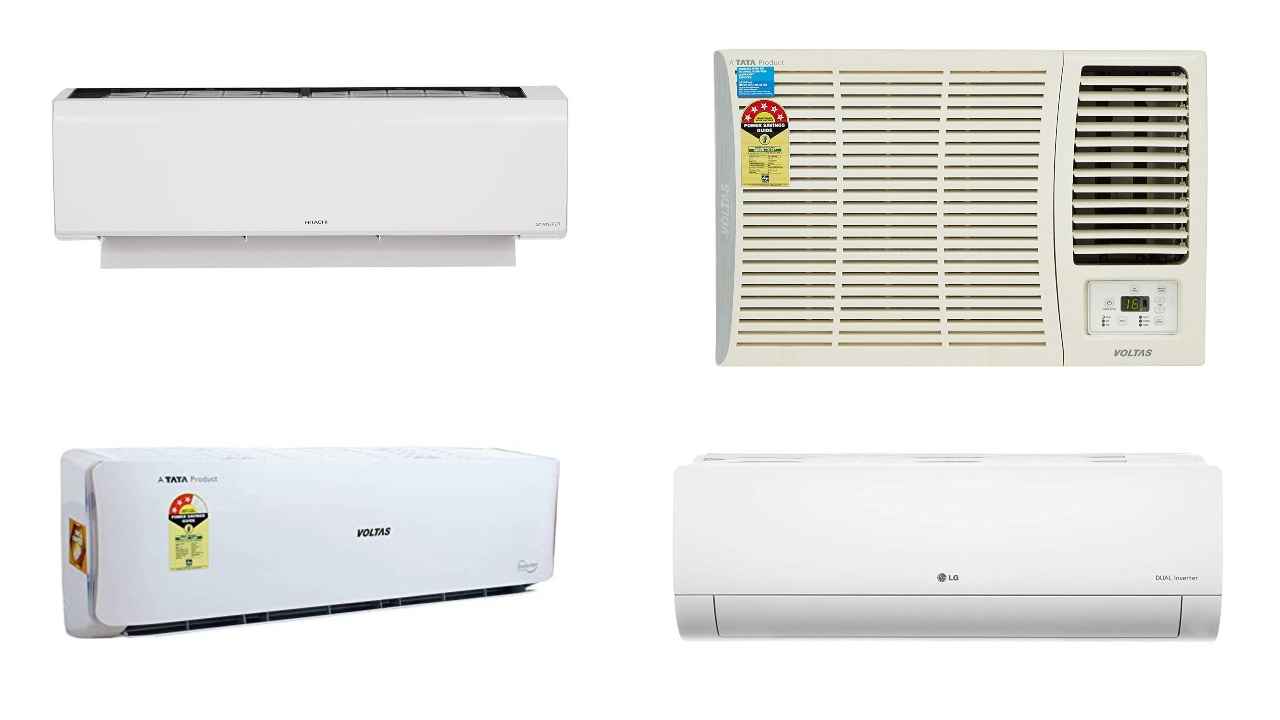
Mid-summer is when we have it the worst, temperatures in Urban environments can go up to 36-37 degrees Celsius, and rural environments are no different. It becomes essential to pick the right air conditioner (AC) that best suits your needs. Thankfully, Air Conditioners (ACs) have become a lot more affordable and even more efficient in these times.
 Survey
Survey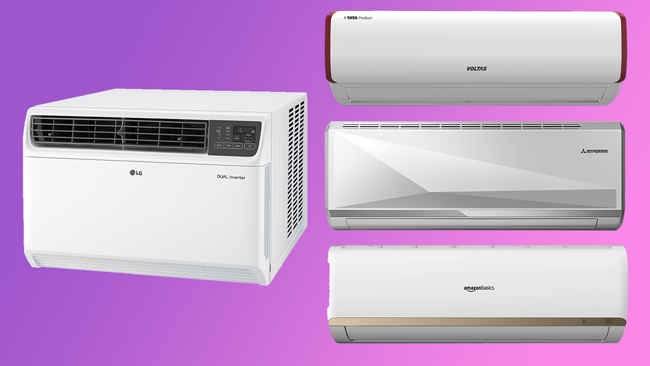
Figure out the right AC to get
We made buying an air conditioner a lot easier for you with this detailed guide on how to choose the best AC for yourself, that explains everything you should keep in mind before buying an air conditioner. You can also compare the specifications and features of up to four ACs using our comparison tool.
What to consider while buying an AC?
For ACs, we’re focused on its cooling capacity, what kind of ambient temperature it’s built for, filtration, the coolant used and a few of the smarter features that have now become common.
Type of ACs
Window ACs
They are pretty large because they have to incorporate every component inside a single chassis. This also means that there are fewer things that a consumer has to worry about, and thus, the entire unit ends up being cheaper than the rest.
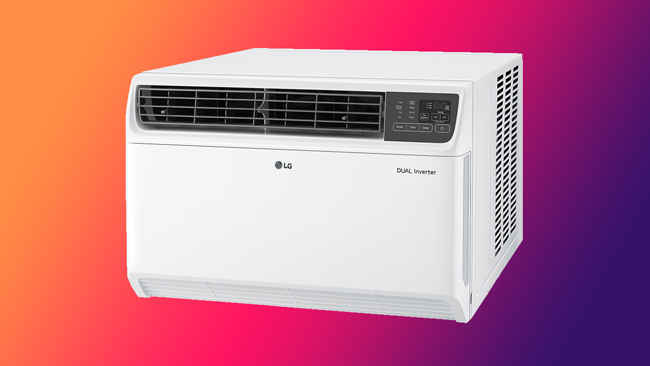
Window Air Conditioner
Such ACs are also termed monoblocks for this very reason. To mount a Window AC onto a wall, you ideally require about 9-12 inch thick walls. If your walls are thinner than that, an additional support structure will be necessary, or you’re better off looking for a thicker wall.
Pros
+ Cheap
+ Easy to install
+ Monoblock design
Cons
– Noisy
– Needs a thick and sturdy wall for mounting
Split ACs
Seen as an improvement over Window ACs, split ACs are made by separating the compressor and heat dispensing coils into an external unit which sits outside your home. Maintenance for split ACs is more difficult since the maintenance personnel have to access the external unit.
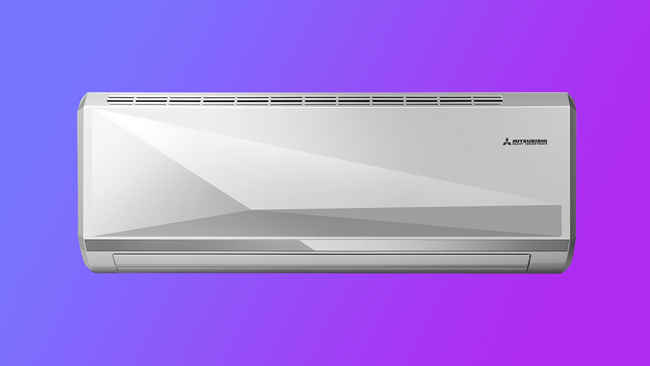
Split Air Conditioner internal unit
There are also certain limitations regarding how far apart the internal and external unit can be installed. The farther you place the two, the less efficient the combination becomes so you should ideally keep it low. That being said, these ACs can be installed up to 40 meters away from each other provided the interconnecting tubing is well-covered. Cassette ACs are a variant of split ACs in which the internal unit is mounted on the ceiling of the room.
Pros
+ Expensive
+ Makes less noise
+ Can be installed on any wall – Difficult to install
Cons
– Higher risk of coolant leaks
Capacity or Tonnage
When you’re trying to cool a room, you need to look at the size of the room, the number of heat sources, the ambient temperature of the geographical region, number of windows in the room and surfaces exposed to the sun. These factors play into the simple rules of thermodynamics, but we’re not going to teach you physics in this guide but rather drill it down into simple logic.
What we’re presenting is a rather simple calculator. Simply pick the right option in each row of parameters. You should only pick one option in each row. There are ten rows in all. Take the score for each row and total it up to get the final grand total. Then refer to the chart to get the recommended tonnage.
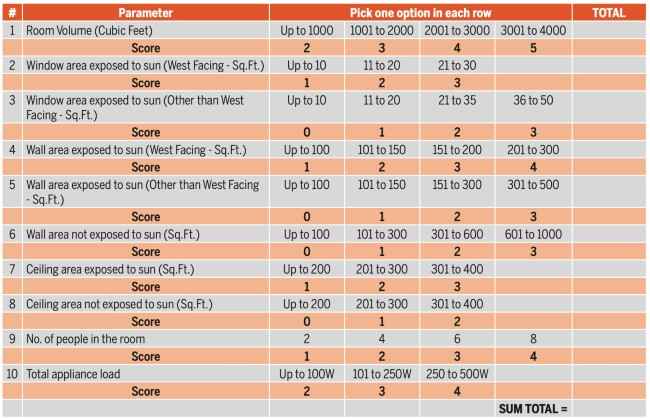
AC Tonnage Calculator
In case, your score is higher than what this chart recommends, and you need to split the room into two logical parts and then use the above chart for each segment and then install two ACs in the room.
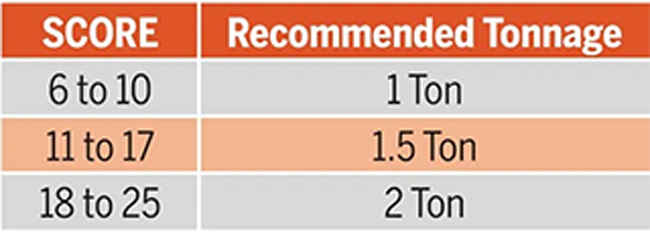
Reference sheet for score tonnage
You can check out our handpicked list of the best Split and Window ACs under different tonnage-
Efficiency and rating
With heavy appliances, you’ll always see an energy efficiency rating applied. The Bureau of Energy Efficiency requires that every AC have a label indicating its efficiency on a 5-star scale. The more stars you have on this scale, the more efficient the AC will be.
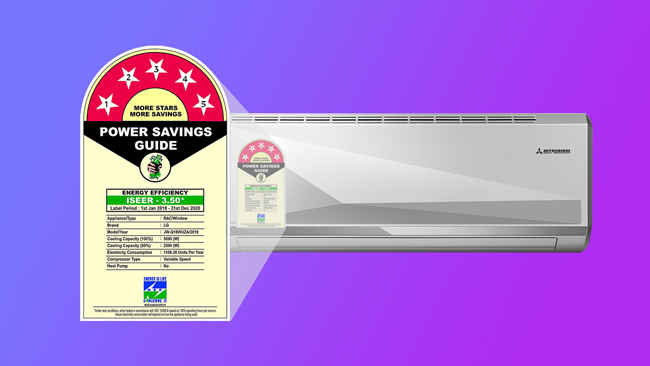
ISEER Rating for Air Conditioners
The Energy Efficiency Ratio is simply calculated by taking the cooling capacity of the AC and dividing it by the power consumed by that AC. The chart below gives the Star rating applicable for the EER range.
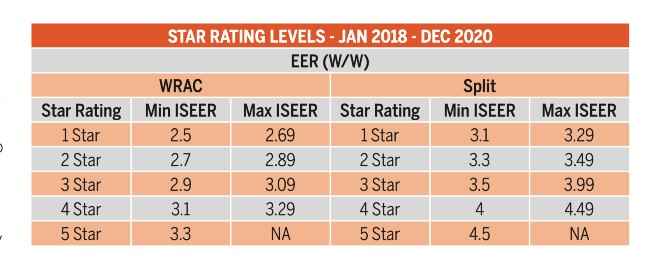
Latest BEE ISEER Energy Efficiency Rating for ACs
These ratings go a long way in saving power consumption. A 5-Star AC can be up to 35% more efficient than a 1 Star AC. However, 5-Star ACs are also way more expensive, and it will take a couple of years before the higher cost evens out based on money saved for utility expenses.
Inverter or non-inverter ACs
Inverters are what convert DC (Direct Current) power to AC (Alternating Current) power. Within air conditioners, you first take the AC power from the wall socket and convert it to DC and then turn it back into AC for the compressor motor. Traditional air conditioners used to do this in a fixed manner so compressors would either be in an ON state or an OFF state. Inverter air conditioners are more dynamic with the switching frequency. This allows the compressor to work in a variable manner so effectively; you are varying the tonnage/capacity of the air conditioner as per your needs. This precise control helps you manage temperature better than traditional air conditioners.
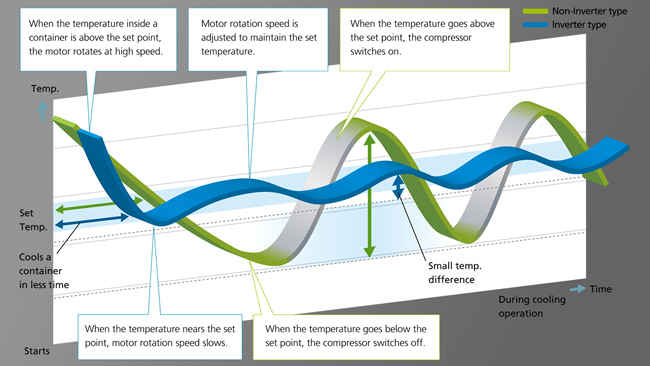
Source: Daikin
However, getting to the right temperature takes a little extra time in inverter air conditioners as compared to traditional air conditioners. Because there is complicated circuitry involved, these inverter air conditioners are also more expensive to repair, especially when the main circuit board, i.e. the PCB goes wonky, you have to replace the board entirely. With traditional air conditioners, you could simply replace the individual components on the circuit board as they weren’t complex. Of course, if you were to get the parts list, you can always replace the components on an inverter air conditioner as well, but you’ll be stuck if the main microcontroller is messed up. You need to programme those before replacing them.
Since the capacity of inverter air conditioners is variable and more precise, you end up using just the right amount of power needed. This makes inverter air conditioners more efficient than traditional ACs. Certain manufacturers also use twin cylinder compressors which allow for greater control over the compressors. That, coupled with inverter technology, helps save power even more. However, complicated machinery tends to break down more often than simpler machinery. Here are the pros and cons summarised.
Pros
+ Uses less power
+ More consistent temperatures – Less reliable
Cons
– Expensive
Miscellaneous
Filters
Filters are capable of trapping particles and performing the function of an air purifier as well. These ACs come with a separate replaceable filter module, and the practice is more common in industrial HVAC systems that are meant to be installed for hospitals and clean rooms. Most home ACs don’t have such advanced filters. The ACs that mention PPM statistics for known pollutants rather than generic terms like “bacteria filters” are what you should focus on.
Heating
Certain ACs can heat the room during chilly winters. This is helpful since you can reduce the number of appliances require.
Timers
Timers allow you to program the AC to operate for a certain period before shutting down automatically. This is great if you want the room to be cooler when going to sleep and then want the AC to shut off automatically after a couple of hours.
Mithun Mohandas
Mithun Mohandas is an Indian technology journalist with 14 years of experience covering consumer technology. He is currently employed at Digit in the capacity of a Managing Editor. Mithun has a background in Computer Engineering and was an active member of the IEEE during his college days. He has a penchant for digging deep into unravelling what makes a device tick. If there's a transistor in it, Mithun's probably going to rip it apart till he finds it. At Digit, he covers processors, graphics cards, storage media, displays and networking devices aside from anything developer related. As an avid PC gamer, he prefers RTS and FPS titles, and can be quite competitive in a race to the finish line. He only gets consoles for the exclusives. He can be seen playing Valorant, World of Tanks, HITMAN and the occasional Age of Empires or being the voice behind hundreds of Digit videos. View Full Profile
